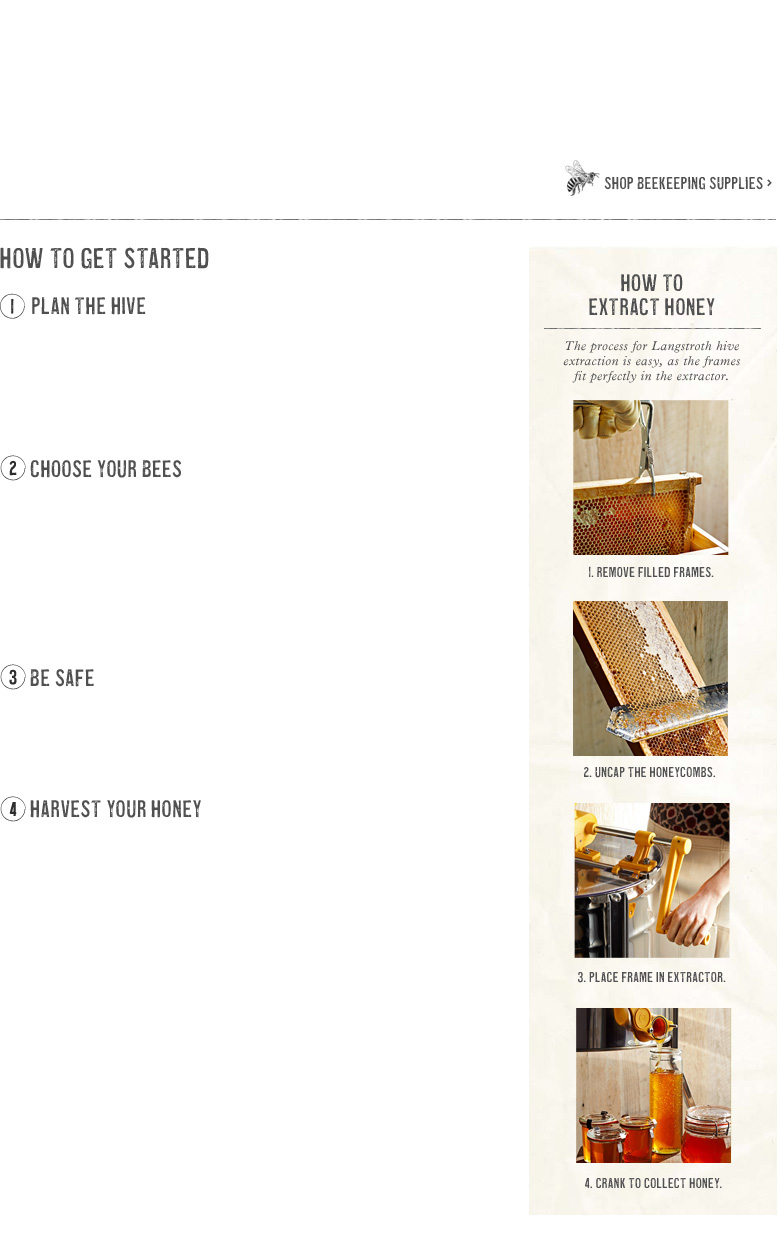

Whether drizzled over homemade yogurt, used for naturally sweetening tea or adding depth of flavor to cookies and cakes, fresh honey produced by local bees from the nectar of garden flowers will have a unique flavor that is superior to typical, store-bought honey.
The benefits of cultivating your own honey extend beyond sweet rewards, as active bees are also a vital component of an edible garden.
Common garden plants such as melons, cucumbers, squash, berries and most fruit trees — up to one-third of the foods that humans eat — depend on insect pollination to produce. Honeybees are the most efficient insect pollinator, and fruits and vegetables will benefit greatly from their activity by growing larger and producing more seeds, resulting in a sweeter flavor. Rather than relying on roaming wild bees, home gardeners can start their own honeybee hives to continually support their growing efforts.
Thanks to honeybees' mild temperament and adaptability, it's possible to set up a hive nearly anywhere–even a city rooftop. Before you plan your own honeybee colony, check local ordinances covering the keeping of bees on residential property and keep in mind that the bees will need a nearby source of water, like a water fountain, birdbath or pond. If possible, it's a good idea to put up a high fence or hedge around the hive so bees will fly up and over people's heads on their way to pollinate plants. We offer beekeeping essentials, including easy-to-assemble beehives and a starter kit.
In the United States, the most common bee is the Apis mellifera, or Western honeybee. There are a handful of subspecies, or breeds, that you can order, and a local beekeeping club can help you determine what is ideal for your needs and climate. You'll need three types of bees for a flourishing hive: a queen bee; worker bees, which make up the majority of the hive; and drones, whose sole purpose is to mate with the queen.
As home beekeeping gains in popularity, there are more and more sources for buying bees. Artisanal honey producers, found at most farmers' markets, will usually be happy to share some local resources for obtaining bees (and hopefully some helpful tips and advice for getting started). There are also several suppliers who now ship bees directly to many parts of the country.
Bees attack only in response to a serious threat, as stinging may mean the end of a bee's life. Typically, honeybees won't bother your family or pets. But when it's time to interact with the hive, protective clothing—from head to toe—is essential, and a calm disposition will serve you well. Before you start, be sure to consult a doctor to determine if you or any members of your family have an allergy to bee stings.
Honey extraction is a six-step process. First, protective clothing is donned from head to toe. Next, a smoker box or other method distracts the bees the hive is carefully opened. The bees are then shaken or brushed from the hive, and the "supers" on which the honey has been deposited are pulled from their frames. The wax-sealed honeycomb is uncapped to expose the honey, and then the honey is pulled from the comb using an extractor or a hand method. Finally, the honey is strained and bottled. The plants growing nearby will determine the flavor and color of your honey. As the colony becomes established, your honey yield will increase. Beeswax, the natural wax produced in honeybee hives, can also be harvested from the hive and can be used to make your own natural soap, candles and food wax.








